
Bee venom therapy has been used since ancient times, 2000 years ago Chinese therapists were using it for treating arthritis; Hippocrates-the "father of medicine" in ancient Greece was using bee venom and calling it "Arcanum”. The value of this therapy continuously used in folk tradition, was discovered again in 1850-1860 by European physicians: Dr Desjardins in France, Dr. Schwabe in Germany, and Dr. Philip Terc in Austria. Dr. Terc was the first physician that applied bee stings in a systematic way for treating rheumatic diseases in his patients. After 1930 bee sting therapy was also used in U. S. due to the research and practice of Dr. Bodog Beck and Dr. Broadman. At present, the countries with traditional and clinical experience in the use of bee venom therapy are China, Korea, Japan, Russia, Romania, Bulgaria and Brazil, while in the United States the use of bee venom is limited only for hyposensitizing allergic subjects.
Bee venom is a 100% genuine bee product, produced in a small gland in the abdominal part of the body of the working bees and of the queen. Drones do not posses such a gland. Bees are using their venom in order to protect the hive from intruders-insects, including foreigner thief bees, animals, humans, and to destroy the germs that develop in the corpse of any small animal mouse etc. that is killed inside the hive. After stinging the intruder the bee dies within one hour.
Bee venom has been used for long in the treatment of rheumatic diseases. Although there is a difference in the composition of venom of different bee species, there is research regarding the successful treatment of rheumatism not only with the venom of Apis mellifica, specific to Europe and U.S., but also with the venom of Apis dorsata and Apis cerana , (in China, Japan, India)
Bee venom contains: water 65-70% - a very good carrier for other substances, peptides, the most important is mellitin, a polypeptide containing 26 amino acids and representing 40-60% of the dry fraction of bee venom; mellitin is responsible for many biological actions of bee venom. At present mellitin is one of the strongest known anti-inflammatory agents, therefore it can be very useful in the treatment of arthritis and rheumatic disease. In 2004 a team of researchers in South Korea published the result of their research regarding the anti-inflammatory effect of mellitin. The study has proven that mellitin has the power to block the expression of the inflammatory genes, much like the COX-2 inhibitory drugs used to treat rheumatoid arthritis; therefore it is inhibiting the inflammatory response and may be of great benefit in degenerative and inflammatory diseases. Mellitin has antibacterial and antifungal effects, induces histamine relapse, has radio protective properties, especially against X-rays, decreases high blood pressure, has strong anti-inflammatory properties, stimulates the adrenals in order to release catecholamines and cortisol, so it increases the cortisol levels in the serum. Bee Venom contains apamin-an antigenic polypeptide with anti-inflammatory properties, cardiopeptid-that increases the contraction force of the heart and also the cardiac rhythm; it has antiarythmic properties and stimulates adrenals for releasing cortisol and cathecolamines, MCD- a peptide recently discovered that was proven to have 100 times stronger anti-inflammatory effect compared to hydrocortisone in the treatment of induced adjuvant arthritis. Enzymes: A 2 phospholipase- that has radio protective activity, induces histamine release, decreases high blood pressure and has antitumor activity; it has antigenic properties, being the major allergen agent of the bee venom. Hialuronidase- that increases capillary permeability and is an antigenic and anaphylactic compound.
How to use :
1. Traditionally, bee venom was administered with live bees by stimulating them to sting the trigger area; the bee is held with a pair of tweezers and it is applied on certain points: the most painful areas in rheumatoid arthritis or osteoarthritis, on trigger points or acupuncture points. Many doctors combine acupuncture with apitherapy and the resulting apipuncture was proven to be very effective. The skin should be cleansed with water and soap, no alcohol or iodine, as these substances inactivate bee venom. After stinging, the needle together with the venom sack are completely detached from the abdomen of the bee and the sack releases its content under the skin of the patient- about 0,1 mg of venom. It is the most effective method of treatment because the properties of the venom are entirely preserved. The number of stings and the duration of treatment is variable according to the disease: for a tendonitis 2-3 stings a day repeated 2-5 times may be enough, while a chronic disease like arthritis may require 2-3 sessions per week for 1 to 3 months.
2. Injectable venom solution is the next method used for treatments. Venom solution is prepared from pure bee venom dissolved in a sterilized solution. This method inactivates few compounds of the venom and makes it less active, still efficient enough for treatments. This standardized solution is considered a homeopathic preparation, it is administered intradermally or subcutaneously and each injection is the equivalent (or less) of the venom sack content of a honey bee. One of the important benefits of this method is that it allows the use of bee venom while the bee remains alive; the venom collecting procedure protects bees from being sacrificed.
3. Electrophoresis or ultrasonophoresis: the methods use highly diluted bee venom (ultrasonophoresis requires the mixture of bee venom with an ointment); the venom solution or the ointment is placed on the affected area and it penetrates the body assisted by a continuous electric current or by ultrasounds. They are painless and non-invasive techniques, very useful for sensitive patients who need long term medication: patients suffering from chronic pain, high blood pressure, osteoarthritis.
4. Ointments with bee venom developed for treating arthritis, rheumatism, tendonitis, bursitis, joint inflammation.

Necessary precautions for bee venom use: 0.5 2% of the population is allergic to bee venom and allergy occurs in people who have been stung frequently by bees so all patients should be tested before going bee venom treatment. Histamine can produce spasm of the coronary arteries, it may have negative effects on the thyroid gland, pancreas and ovaries, 50-100 simultaneous stings can cause a cramp, temporary shortness of breath, cyanosis, tachycardia and symptoms of paralysis, 200 simultaneous stings determine cyanosis, convulsive reactions, tachycardia, and paralysis, over 500 simultaneous bee stings may induce death by paralysis of the breath center in the brain. The practitioner should have close at hand a bee sting kit containing injectable epinephrine in case of anaphylactic shock. The normal effect of a bee sting is to cause local pain, immediate erythema and often a small area of oedema but allergic persons may develop severe symptoms. In case of allergy reactions can be local or generalized; local reactions include oedema that comes over several hours and varies in size but may affect an entire limb, while general reactions that vary greatly in severity can be: erythema, pruritus, and urticaria, facial or generalized angioedema. In severe cases hypotension, fainting or loss of consciousness may occur. Still these reactions are very rare and under the guidance of an experienced practitioner bee venom therapy is a safe procedure.
1. Dr. Andreea Dragomirescu, MD Medicine is member of the Romanian National Association For The Promotion of Unconventional Medical Branches, Romania. andreeariana@yahoo.com
2. Dr. Sanjeev Sood is Prof. & Head of Panchakarma Department, Dayanand Ayurvedic College, Jalandhar







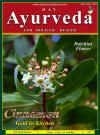 Dec 2024
Dec 2024
 May 2024
May 2024
 September 2022
September 2022
 April 2022
April 2022
 October 2020
October 2020
 Jan 2020
Jan 2020
 June 2019
June 2019
 January-February 2019
January-February 2019
 Augest-September
Augest-September
 April 2018
April 2018
 November 2017
November 2017
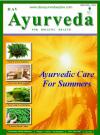 June 2017
June 2017
 November 2016
November 2016
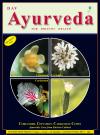 September 2015
September 2015
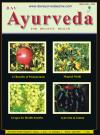 March 2015
March 2015
 July 2014
July 2014
 January 2014
January 2014
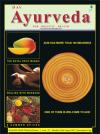 July2013
July2013
 March 2013
March 2013
 May 2012
May 2012
 May 2011
May 2011
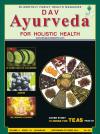 Sep 2010
Sep 2010
 Jun 2010
Jun 2010
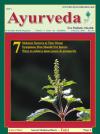 Feb 2010
Feb 2010
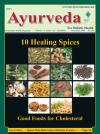 December 2009
December 2009
 August 2009
August 2009
 June 2009
June 2009
 Feb 2009
Feb 2009
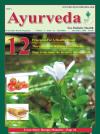 December 2008
December 2008
 October 2008
October 2008
 March 2008
March 2008
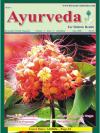 July 2008
July 2008
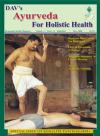 May 2008
May 2008